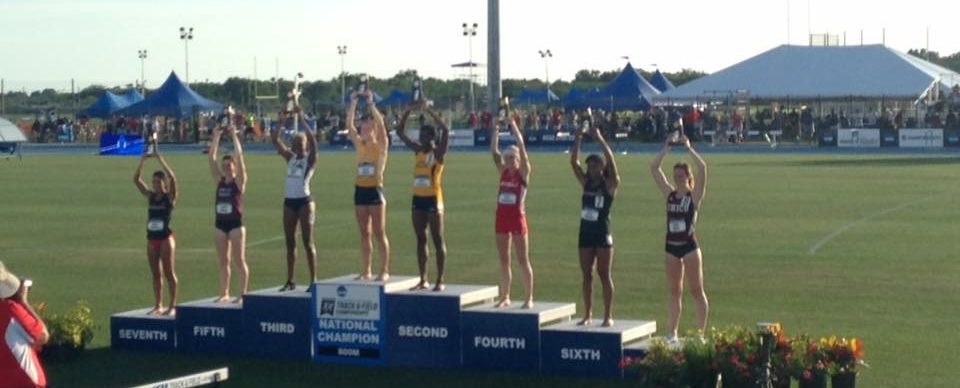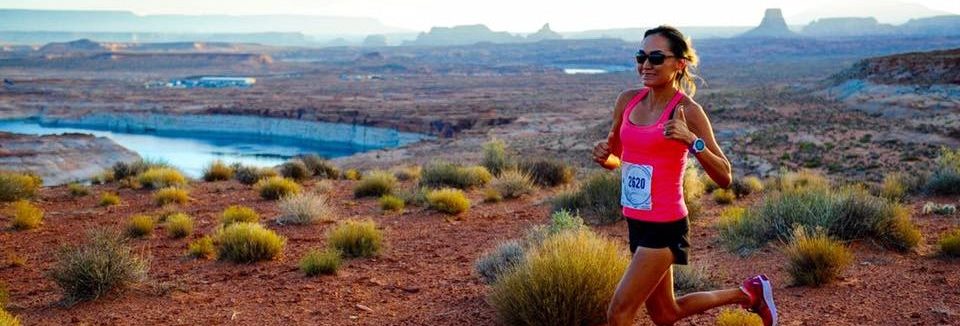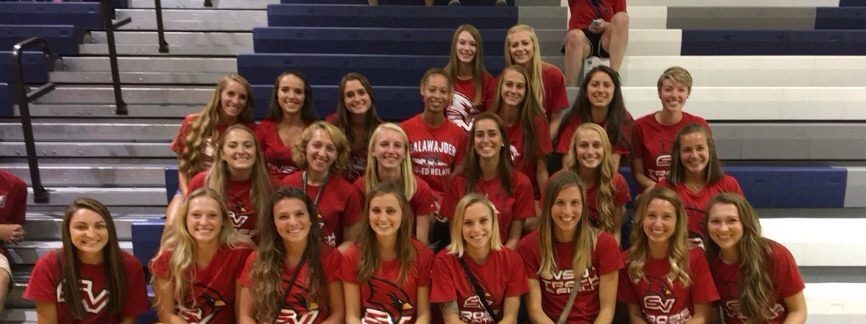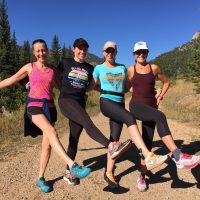This week we speak with Angelina Ramos, women’s cross-country/track & field distance and middle-distance coach for Saginaw Valley State University (SVSU). Angelina has been training a group of eighteen athletes since being hired by SVSU in 2015 to revive the women’s distance program. The team had just come off of a bad year: SVSU had failed to qualify for the 2014 cross-country nationals for the first time and confidence was low. Many of the women in her team had recurring injuries and had lost belief in their abilities. For others, the passion for running had simply gone. Knowing that she had to shake things up, Angelina set about trying to restore that belief and passion, incorporating activacuity’s guided imagery sessions into her weekly training regimen. Here she recounts the impact it had on her star 800m runner, Taylor Stepanski, as she competed in the NCAA nationals at the end of May.
The 2016 National Outdoor NCAA Division II Championships were held at the IMG Academy in Bradenton, Florida, in 95-degree heat and 92% humidity. The prelims for the 800m were on Friday, and the finals were on Saturday. An hour before the prelim, Taylor said, “You know this is the least worn out and run down I’ve EVER felt going into a national meet. This is the first time I’ve never been nervous going into a race. I know my plan, I’m ready to execute the race, and just move on to the final. I can do this. I’m relaxed, this never happens.” Then twenty minutes before her race she says to me, “I lied, ok, I’m nervous now. My stomach is doing gymnastics.”
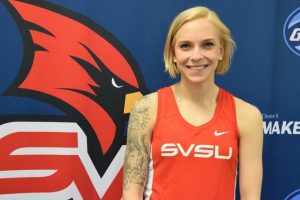 Taylor is an introvert who prefers small social settings, so the very atmosphere of nationals—with hundreds of people in attendance and lots of noise—makes her nervous because that’s the type of environment that heightens her anxiety. Despite winning the 800m conference championships a few years in a row, she had struggled with believing that she could compete with the best athletes nationwide. I reminded her that it’s OK to be nervous, that her body was just gearing up to perform. I drew her attention back to our strategy, something we had recently adapted to play to her strengths.
Taylor is an introvert who prefers small social settings, so the very atmosphere of nationals—with hundreds of people in attendance and lots of noise—makes her nervous because that’s the type of environment that heightens her anxiety. Despite winning the 800m conference championships a few years in a row, she had struggled with believing that she could compete with the best athletes nationwide. I reminded her that it’s OK to be nervous, that her body was just gearing up to perform. I drew her attention back to our strategy, something we had recently adapted to play to her strengths.
Previously, we were coaching her to sit on another athlete’s shoulder and stay relaxed for large portions of the race. But that strategy just didn’t work for Taylor. During our activacuity visualization sessions, we noticed that most of Taylor’s positive images were of high school races where she “went out crazy” and led from the front. She loved that people used to say to her coach, “That girl is going to die! Why’s she going out so crazy, so fast?!” She loves feeling a competitor breathing down the back of her neck and the challenge to hold them off. When these positive visualizations kept coming up again and again, we knew we had to change things.
Moreover, running in the pack didn’t make sense considering that is how Taylor has often fallen in the past. It was how she broke her arm the year before, creating a fear of falling in subsequent races. Experience told us that she had run her best 800m races when she took the lead after sitting for 300m or led from the front the entire time. So I told her, “You’re ready to lead from the gun and run with them breathing down your neck.”
Eight athletes would line up for the heat, all of whom would start in lanes. Four had run 2:09 before, another had matched Taylor’s personal best of 2:07, and two girls who had run 2:10.1–2:10.4. There would be three heats with the first two in each advancing to the finals, accompanied by the next two fastest qualifiers. I instructed her to run the first lap in 60 seconds and the second in 68 because then she’d automatically advance to the final based on time or place. I assured her that this would thin the field out in the first 200m and then she wouldn’t have to worry about anyone being around her. “No one wants to take the lead in prelims and finals early on, so if you take the lead early, they’ll let you, and you just run away from them the whole time.” She nodded and committed to the plan.
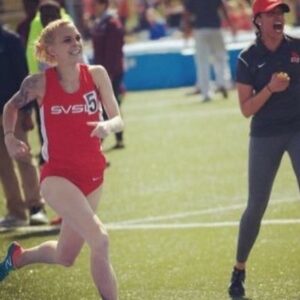 When the gun went off, Taylor ran right to the front. She hit the 200m in 29.8 and the 400m in 60.5. The field had thinned so that her closest two competitors were left trailing behind by about 15 meters, exactly as we suspected. Taylor looked smooth and easy, hitting the 600m in 1:33. As she flew past the Jumbotron, she could see that the two girls were still behind her but that they would not catch her. A sly smile crept into her eyes, but Taylor maintained her composure as she rounded the final turn, easing herself through the home stretch to finish in 2:08.04.
When the gun went off, Taylor ran right to the front. She hit the 200m in 29.8 and the 400m in 60.5. The field had thinned so that her closest two competitors were left trailing behind by about 15 meters, exactly as we suspected. Taylor looked smooth and easy, hitting the 600m in 1:33. As she flew past the Jumbotron, she could see that the two girls were still behind her but that they would not catch her. A sly smile crept into her eyes, but Taylor maintained her composure as she rounded the final turn, easing herself through the home stretch to finish in 2:08.04.
It was the strongest and most confident she’d ever looked in a prelim. As a freshman and sophomore, Taylor had qualified for nationals but had never advanced out of the prelim to the final. She harbored fears of being the type of athlete who never advances to the final, and used to think that she was “cursed.” But that had all been dispelled by this performance. She looked at me triumphantly and exclaimed, “I did it!”
Taylor took this confidence into the finals on the following day, where she was pitted against a US Olympic trials qualifier. The stakes had been suitably raised, but this only served to improve Taylor’s performance. As the race got underway, Taylor stayed hot on the heels of the front three, who began to pull away the rest of the pack. The Olympic trials qualifier pulled the first lap out in 57 seconds, yet Taylor ran fearlessly and kept pace with the front three to finish in 4th with a time of 2:07.04—just .02 seconds shy of her personal best. In so doing, it became her fastest 800m final performance in a national or conference competition by over two seconds, in spite of the high heat and humidity. Taylor proved that she was one of the best; that she could compete at the highest level. But more importantly, I was overjoyed for Taylor because she had believed in herself and had enjoyed the races, overcoming her fears and limiting beliefs in the process. After such a great performance, there was nothing left to do but celebrate. Not by going ‘crazy,’ but with jumbo-sized Alaskan crab legs – one of her favorite post-race meals!
Look out for our next feature where we’ll reveal how the rest of Angelina’s SVSU team fared in the 2016 GLIAC conference championships! activacuity provides a daily dose of positive guided imagery sessions that can be used individually or in a team or group setting to facilitate athletic performance. Find out what you, or your team, can do when you make that mind-body connection – check out our subscription options here.

